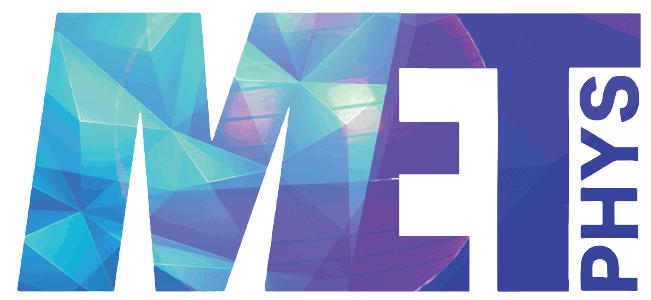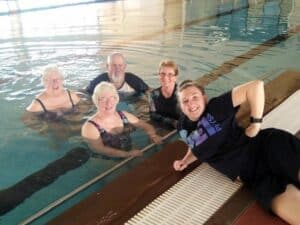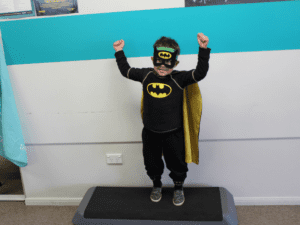Most people will experience back pain at some point in their life, and it’s more common in middle and older age.90-95 % of cases of low back pain are referred to as non-specific, which means that it’s not caused by a specific abnormality in the spine, or pathology (like an infection, cancer, fracture etc).
Whilst it’s one of the most common reasons for people to seek medical care, international guidelines for the care of back pain recommend non-medical approaches to its treatment. It’s important to talk to your GP straight away if you experience pain radiating into both legs, changes to sensation in saddle area (genital and perineal area), altered bladder or bowel function (retention or incontinence), weakness in the feet or legs, if there’s a history of trauma (e.g. fall, car accident etc).
What Does It Mean to Have Back Pain?
Back pain doesn’t generally mean your back is badly damaged, it means that it has become more sensitised and is sending messages to your brain to keep you “safe”. Most new cases of back pain resolve quickly on their own, usually within a couple of weeks. For most people imaging, such as X-rays is not recommended and will only be used to rule out anything serious. For the most part, it is not all that useful for identifying the cause of your pain. Your doctor or allied health professional will recommend you remain active and continue with your normal activities and exercise as far as possible, because more passive treatment, such as bed rest and pain medications, tends to be linked with increasing levels of disability. It’s best to reduce or modify certain painful activities, such as lifting, for a few days.
It’s not unusual for back pain to recur, so your doctor or allied health practitioner will also provide education about the lifestyle changes you can make to help prevent it from recurring or to manage symptoms.
Studies have found that if you are sedentary, overweight, or obese you have a higher risk of developing back pain. The research also suggests that exercise is the most effective means of preventing low back pain and that exercise interventions that involve postural rehabilitation are more effective at improving function and reducing the effects of chronic back pain than medical treatments.
Back Pain and Exercise
If you have non-specific low back pain the recommendation is to remain physically active, because long periods of inactivity, such as sitting and bed rest, will hamper recovery. Research supports that exercise that focuses on increasing muscular strength, flexibility, and cardiovascular fitness is effective in the management of non-specific low back pain.
If you have chronic low back pain it’s important to do resistance exercises to strengthen muscles, such as body weight or weight training, and improve your cardiovascular fitness so that you are able to complete everyday activities.
The lower back is benefited by the support provided by stronger core muscles. A weak core can result in an unstable and inflexible low back. Restricting movement in your torso to avoid pain only makes your spine more unstable and inflexible – creating a vicious cycle of pain. It’s important to work on strengthening the back, deep abdominal, and stabiliser muscles to help with chronic non-specific low back pain.
You can help your body move and function better by using stretching exercises to increase flexibility and range of movement. You can support healing and reduce the stiffness that can contribute to back pain by doing cardiovascular or aerobic-based exercise to increase the delivery of blood and nutrients to the tissues.
You can help your body move and function better by using stretching exercises to increase flexibility and range of movement. You can support healing and reduce the stiffness that can contribute to back pain by doing cardiovascular or aerobic-based exercise to increase the delivery of blood and nutrients to the tissues.
Cardiovascular exercise, such as walking, jogging, swimming, and cycling, results in an increase in endorphin production. Endorphins act in a similar way to drugs like morphine and codeine to help reduce pain. Research has also found that aerobic exercise can improve function and reduce the fear associated with moving. Moderate-intensity exercise that gets you a little bit puffed appears to be best, but find the intensity (I.e. how hard you work) that’s best for you.
While there’s no “one size fits all” exercise program or “best” type of exercise to help manage low back pain, it’s important to keep moving. Find the type of exercise that you enjoy, that helps to manage your symptoms. Remember – exercise offers so many other benefits for health, including reducing your risk of chronic disease (like heart disease and diabetes) and helps to manage any pre-existing conditions, improving brain health, managing weight, strengthening bones and muscles to help with everyday activities, and improving mood and mental health.
If you experience back pain it’s important to remember that pain does not necessarily indicate more damage and you should not wait until all pain is gone before you start doing your everyday activities or return to work. People who remain active, even with pain, experience better overall outcomes.




